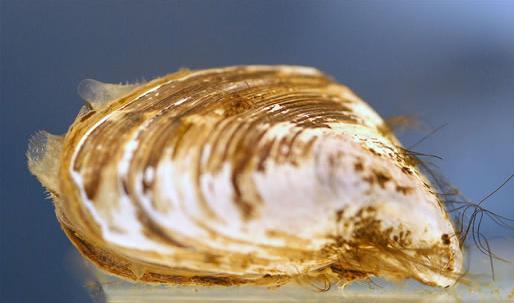Invasive mussels muscle their way into the Great Lakes—listen up for the scoop on why that’s scarier than it might sound.

Don’t be fooled by its size — the tiny quagga packs a big punch to the Great Lakes ecosystem. (Mike Quigley/NOAA)
You might think a creature the size of a dime is no match for a freshwater system the size of Texas, but quagga mussels are prolific breeders. Multiply one by trillions, and you get mussels that can wallop even a big body of water.
Native to Eastern Europe, quaggas—like their cousins the zebra mussels—barged in through the ballast water discharged from ships, and were first spotted in Lake Erie in the late ’80s.
Quagga mussels feed year-round on plankton and other organisms, depleting food supplies for native fish, which can create a devastating domino effect in the food web.
And that, friends, is why finding a way to knock out these invaders is critical to preserving a healthy Great Lakes ecosystem.
Get schooled:
- Got a boat? Avoid inadvertently carrying quagga stowaways with NY DOE pro tips
- Check out this video by the Washington Fish and Wildlife Department:
The fine print:
- This segment was produced in partnership with Cornell’s Atkinson Center for a Sustainable Future.




